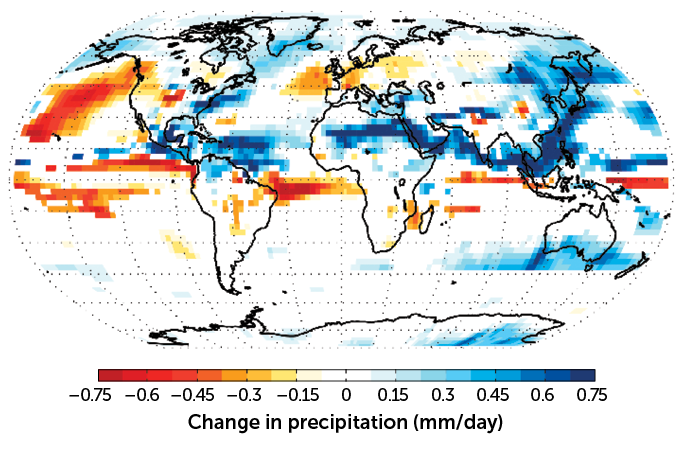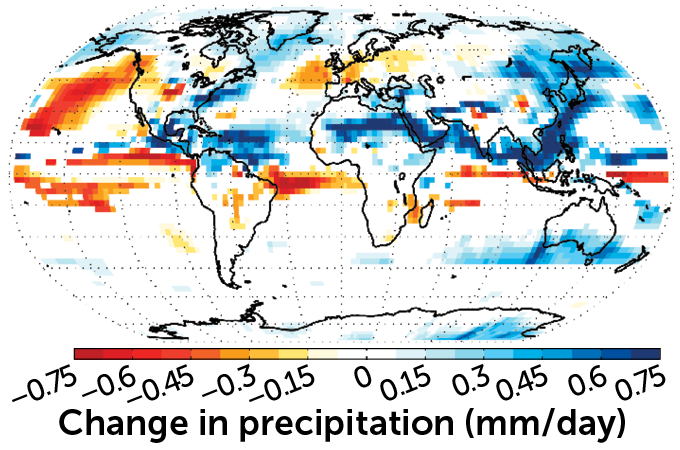
Atmospheric scientist Abigail Swann’s unusual climate models tackle the watery side of how plants affect the planet.
Univ. of Washington
There’s a lot to love about 19th century electronics that spray sparks into the air.
When Abigail Swann was a high school student, building a modern version from scratch of what’s called a Tesla coil struck her as a fine project to tackle with her engineer father in the garage. The underdog genius Nikola Tesla, who developed the voltage-amplifying device, “was really fun to learn about,” she says.
For months, daughter and father poked around electronics surplus stores, custom-cut plastic pieces and repurposed old wine bottles – the family lived among the vineyards in California’s Sonoma County.
The coil eventually sizzled into action, and Swann took it to school. “It made some pretty big sparks,” she says — and it lit up a long fluorescent lighting tube she held nearby. She doesn’t remember if her classmates were impressed. “It was more about making it, and making it work.”
Today, Swann, 38, builds whole planets, some of them very odd and all of them simulations inside a computer. An atmospheric scientist at the University of Washington in Seattle, she has turned her garage creativity to developing computer models for testing ideas about Earth’s atmosphere. “I started very early on with experiments where I would do things like: What if the whole world were grass? And what if the whole world were an ocean? And why are they different?”
She focuses on an often-overlooked but essential factor for understanding the effects of climate change: how plants influence the atmosphere by transporting water. “Abby is extremely good at drilling down to the essence of a problem,” says Charles Koven, who was an officemate in grad school and now works at Lawrence Berkeley National Laboratory in California. “She can propose model experiments that seem crazy at first.” Yet these schemes “turn out to be perfect ways of identifying fundamental processes that show up in a wide variety of situations.”
Tree power
To see what kind of effect plants might have on the atmosphere, Abigail Swann ran computer simulations that added a lot of trees in the middle latitudes of the Northern Hemisphere. Those hypothetical forests would lead to far-flung changes in precipitation patterns (shown), even in the opposite hemisphere. Some areas would get wetter (blue) and some would get drier (orange).
The simulated effects of northern forest expansion on precipitation


Swann sounds surprised to have ended up in a profession of staring at computer screens. “I love to be outside and actually make things with my hands,” she says.
She was interested in physics back at Sonoma Valley High School, a “really ordinary” school, she says. A lot of the top students in her classes were women, so it “was kind of a shock” when she was one of only a few female students, sometimes the only one, in undergraduate physics classes at the University of California, Berkeley. At Berkeley, Swann heard Inez Fung lecture about atmospheric physics. Fung “connected all kinds of real things that mattered,” Swann says. After getting a master’s from Columbia University in 2005, Swann returned to Berkeley, with Fung as her adviser, to finish a Ph.D. in 2010 on plant influences on the atmosphere.
Atmospheric scientists have long recognized that plants pull carbon dioxide, a major greenhouse gas, out of the air. Swann focuses instead on how plants affect Earth’s atmosphere by drawing water from soil and leaking water vapor from leaves. Understanding plants’ role “is absolutely essential,” says Sonia Seneviratne, a climate scientist at ETH Zurich. The water effect “has been a bit of a neglected area.”
Untangling how plants impact precipitation could improve plans for fending off food shortages and saving biodiversity. Plants may, for example, change who gets rain and whose crops shrivel a hemisphere away. Trees in one hemisphere could actually move rain belts in another hemisphere from one place to another, Swann’s modeling shows.
That insight comes from Swann’s work on how forests in North America and Eurasia can have a global role. If forests expand, the tree canopy darkens the landscape. When that happens, the hemisphere absorbs more energy, which makes the circulation in the atmosphere rearrange a bit.
Then, air masses that drenched a swath of South America could nudge northward. The center of South America could get thirstier as rains increase toward the equator, Swann, Fung and John C.H. Chiang, also of UC Berkeley, wrote in 2012 in the Proceedings of the National Academy of Sciences.
Thirsty land has become one of the big worries of climate change, with research predicting more frequent and severe droughts across as much as 70 percent of Earth in the next century. Swann and colleagues took a new look at droughts, this time including more details about plant water use in the simulations. In their analysis, only about 37 percent of the world’s land would expect more severe droughts, the team reported in 2016, also in the Proceedings of the National Academy of Sciences. That doesn’t equal a uniform easing of risk, Swann says. Drought predictions for some places, such as southern North America, don’t improve much. And when droughts happen, she points out, they can still be very bad.
Swann has taken on a different project this summer: the birth of her second son. She encourages working parents to talk candidly about the demands of families instead of trying to sustain the pretense of effortlessness (described on Twitter as #secretparenting). Her family might have some tinkering time and perhaps even another Tesla coil in their future.








